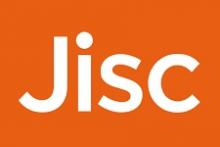Trying to squash diversity?
What opportunities might we be missing by trying to make one size fit all?, asks Audrey McCulloch
Scholarly Publishing is incredibly diverse. We are all just that little bit different.
I am not, however, referring to diversity of the individuals who work in scholarly publishing, but to the publishing organisations themselves. And those publishing organisations in turn reflect another incredibly diverse community, the research community.
But when it comes to finding publishing models, there now seems to be a desire to create only one. Of course, only one model makes things easy and convenient for some, but I have yet to attend an event or meeting discussing publishing models which has failed to include the phrase 'one size does not fit all'. This is not referring to the needs of publishers, it’s referring to the needs of the many different subject disciplines.
I keep returning to two questions:
- Why, when the opportunities are now available to publish in so many ways, is there such a drive to ‘force’ a particular publishing model on everyone who works to communicate research? and
- Why has such a diverse researcher voice been absent (or drowned out) from many discussions which have been taking place around scholarly communication?
Those who whole-heartedly consider open access to be the best way forward for scholarly communication are trying to implement this across the whole scholarly communication landscape. Whatever your feelings about open access, it is taking a considerably long time to be accepted and implemented across the board. This is frustrating to open access proponents and they continue to look to place the blame firmly with publishers for not moving quickly enough.
Publishers are providing many opportunities for researchers to pick the most appropriate publication route for them, with the development of many new pure open access publishers as well as journals, along with the opportunity to publish in traditional subscription-supported journals, using the hybrid model. The opportunities are there, so why are we not already in a fully-open access world?
Change could be one reason. Change can be scary, or at least difficult. But researchers are used to challenging the status quo, seeking what’s new, different, pushing the boundaries; it’s what they do for a living.
There must, therefore, be other reasons holding back the move to full open access. It is frequently stated that publishers charge too much for the services they provide to support the scholarly communication process. This argument, however, overlooks (or at best misunderstands) the underlying reasons for the challenges to library budgets.
Could it be that, while open access works for some, it’s not the best publication route for everyone? Has open access has simply highlighted the vast diversity of research disciplines and scholarly communications requirements? Are researchers exercising their independence in communicating their research in the way that best suits them and their discipline?
The subscription model is a single model. And it’s frustratingly sticky to some. But regardless of its rights and wrongs, it’s a model which works for many different researchers. It evolved to fit the changing needs of researchers over a long period of time. It wasn’t enforced, or shoe-horned, into the research process.
Perhaps we just need patience and the open access model will evolve to fit. Perhaps researchers for whom this model doesn’t quite work, will work with publishers and perhaps other start-ups to develop even more models for scholarly communication – if they’re allowed to.
Quite rightly, diversity among individuals is being highlighted as an opportunity for the scholarly communications ecosystem to work on improving. We already have a huge diversity of publishers and research disciplines; what are the opportunities we might be missing by trying to make one size fit all?
Audrey McCulloch is chief executive of the Association of Learned & Professional Society Publishers










